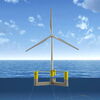
Processing Your Payment
Please do not leave this page until complete. This can take a few moments.
- News
-
Editions
-
- Lists
-
Viewpoints
-
Our Events
-
Event Info
- Women's Leadership Forum 2025
- On the Road with Mainebiz in Bethel
- Health Care Forum 2025
- On The Road with Mainebiz in Greenville
- On The Road with Mainebiz in Waterville
- Small Business Forum 2025
- Outstanding Women in Business Reception 2025
- On The Road with Mainebiz in Bath
- 60 Ideas in 60 Minutes Portland 2025
- 40 Under 40 Awards Reception 2025
- On The Road with Mainebiz in Lewiston / Auburn
- 60 Ideas in 60 Minutes Bangor 2025
Award Honorees
- 2025 Business Leaders of the Year
- 2024 Women to Watch Honorees
- 2024 Business Leaders of the Year
- 2023 NextUp: 40 Under 40 Honorees
- 2023 Women to Watch Honorees
- 2023 Business Leaders of the Year
- 2022 NextUp: 40 Under 40 Honorees
- 2022 Women to Watch Honorees
- 2022 Business Leaders of the Year
-
-
Calendar
-
Biz Marketplace
- News
- Editions
- Lists
- Viewpoints
-
Our Events
Event Info
- View all Events
- Women's Leadership Forum 2025
- On the Road with Mainebiz in Bethel
- Health Care Forum 2025
- On The Road with Mainebiz in Greenville
- On The Road with Mainebiz in Waterville
- + More
Award Honorees
- 2025 Business Leaders of the Year
- 2024 Women to Watch Honorees
- 2024 Business Leaders of the Year
- 2023 NextUp: 40 Under 40 Honorees
- 2023 Women to Watch Honorees
- 2023 Business Leaders of the Year
- + More
- 2022 NextUp: 40 Under 40 Honorees
- 2022 Women to Watch Honorees
- 2022 Business Leaders of the Year
- Nomination Forms
- Calendar
- Biz Marketplace
At last, $25M Portland Harbor dredging project gets underway next month
 Photo / COURTESY, CITY OF PORTLAND
Sediment has been filling in around Portland Harbor’s berthing infrastructure for years.
Photo / COURTESY, CITY OF PORTLAND
Sediment has been filling in around Portland Harbor’s berthing infrastructure for years.
It’s long overdue and taken years to begin, but the dredging of Portland Harbor will finally move forward this winter, with the construction of a “confined aquatic disposal" cell — basically a deep hole dug into the seabed into which the dredged-up material can be permanently deposited.
The city of Portland has signed a contract with Cashman Dredging, of Quincy, Mass., to construct the CAD cell, which will be Maine’s first such disposal facility, according to a news release.
Construction of the disposal pit will be the first tangible step in the dredging project, which will ultimately improve more than 40 sites throughout Portland Harbor.
Cashman is scheduled to move equipment into the harbor during December. Construction of the CAD cell is scheduled to take place over January and into February.
Dredging around piers, wharfs and marinas is slated to take place during the offseason months over the next several years.
Contaminated soil
Many Portland Harbor piers have not been dredged in at least 70 years and are slowly filling in with sediment, decreasing water depths and causing a steady decline in available berthing for the working waterfront.
The piers have not been dredged in so long because the sediment accumulating around Portland’s piers contains modern-day pollution from storm water runoff, and “legacy" contaminants from long-departed factories and shipyards, officials say.
Dredging will involve an estimated 244,678 cubic yards of seafloor in an area that’s 2 million square feet, or 46.8 acres, off Portland and South Portland. Natural sedimentation will cap the CAD cell once it has reached capacity.
CAD cells are becoming an increasingly common solution for the clean-up and isolation of contaminated dredge sediments, according to the commissioners. There are 11 CAD cells in Boston Harbor, and CAD cells are also in Hyannis, Mass., Rhode Island, Connecticut, California and as far away as Hong Kong.
Better berthing
“This dredging project, both the construction of the CAD cell and the dredging of the piers and marinas, solves a problem that has been plaguing Portland Harbor for decades: the diminishing ability to berth vessels in Portland and South Portland due to the accumulation of sediments over those decades,” said John Henshaw, vice chair of the board of harbor commissioners for Portland Harbor.
“The beginning of this project marks a significant step toward the continuing viability of our harbor and the economic vitality that it brings to our state.”
The project is a collaboration among the cities of Portland and South Portland and the Portland Harbor Commission.

On the Portland side of the harbor, pier owners have been asking for assistance with dredging since before 2000 when the dredging need was identified in the “Investing in Our Waterfront" report that was later adopted into the Portland Comprehensive Plan.
The city of Portland’s contribution of funds comes from a Waterfront Tax Increment Financing tool that dedicates a portion of new tax dollars from waterfront development toward working waterfront uses.
“Working waterfronts require berthing, but that has long been a problem as a result of the accumulation of contaminated sediments,” said Mark Dion, Portland’s mayor. “This project will be instrumental in ensuring our waterfront continues to thrive.”
Project planning began in earnest in 2014 with engagement of public and private waterfront interests on both sides of the Fore River.
“This regional dredging project has been the most collaborative effort that I have ever worked on,” said William Mann, South Portland’s economic development director. “To keep the parties engaged and committed over such a long period of time is rarely seen.”
Previous Cashman projects in Maine have included dredging off the coast of Kittery and maintenance dredging in the Kennebec River, both in 2020; maintenance dredging of Bath Iron Works’ sinking basin in 2017; and maintenance dredging in Portland Harbor in 2014.
“We’re proud to bring our expertise to Portland and help support sustainable growth for the harbor and its maritime industries,” said Stephen Tobin, CEO of Cashman Dredging.
$8M hole
The CAD cell is designed to be an eight-plus-acre hole in an unused portion of the harbor bottom, excavated 50 feet deep into clean marine sediments.
The clean sediments will be disposed of at a federally licensed location east of Cape Elizabeth. The cell will then be available to receive dredged materials from vessel support areas throughout the harbor.
“CAD cells are the most economical and environmentally friendly approach to mitigating and dealing with spoils in a commercial waterfront where decades of sediments have accumulated,” said Chris Mayo, Maine Department of Transportation’s director of ports and marine transportation.
The project is expected to support economic opportunity along the Portland waterfront, Mayo added.
Earlier this year, the city of Portland said it had cobbled together a total of $25 million from various sources for the project. The CAD cell contract alone is approximately $8 million.
The Maine Legislature has allocated $10 million of American Rescue Plan Act funds to the project. The Maine Department of Transportation is providing up to $6 million in multimodal funds. The city of Portland dedicated $4 million in Waterfront TIF funding, while South Portland is contributing an additional $1 million.
Permitting, assessment and environmental cleanup planning were provided by the U.S. Environmental Protection Agency's Brownfields Program.
The balance of project costs for infrastructure dredging will be provided through private contributions based on the volume of sediment dredged and future contracted costs.
Mainebiz web partners
Related Content
Thank goodness they planned for unanticipated consequences. What could go wrong? I'm sure they are dredging ALL the areas that need dredging. Or is this only for properties paying into the $25 million costs?
Now can they perform water tests on the Fore River and surrounding open waters? Is it safe to swim in this harbor? The Fore River isn't exactly flowing at a rate that would flush the river so we can avoid future dredging. Actually we could design the waterfronts to be self flushing by directly the outflow of tidal water along the edges of the creek.














1 Comments